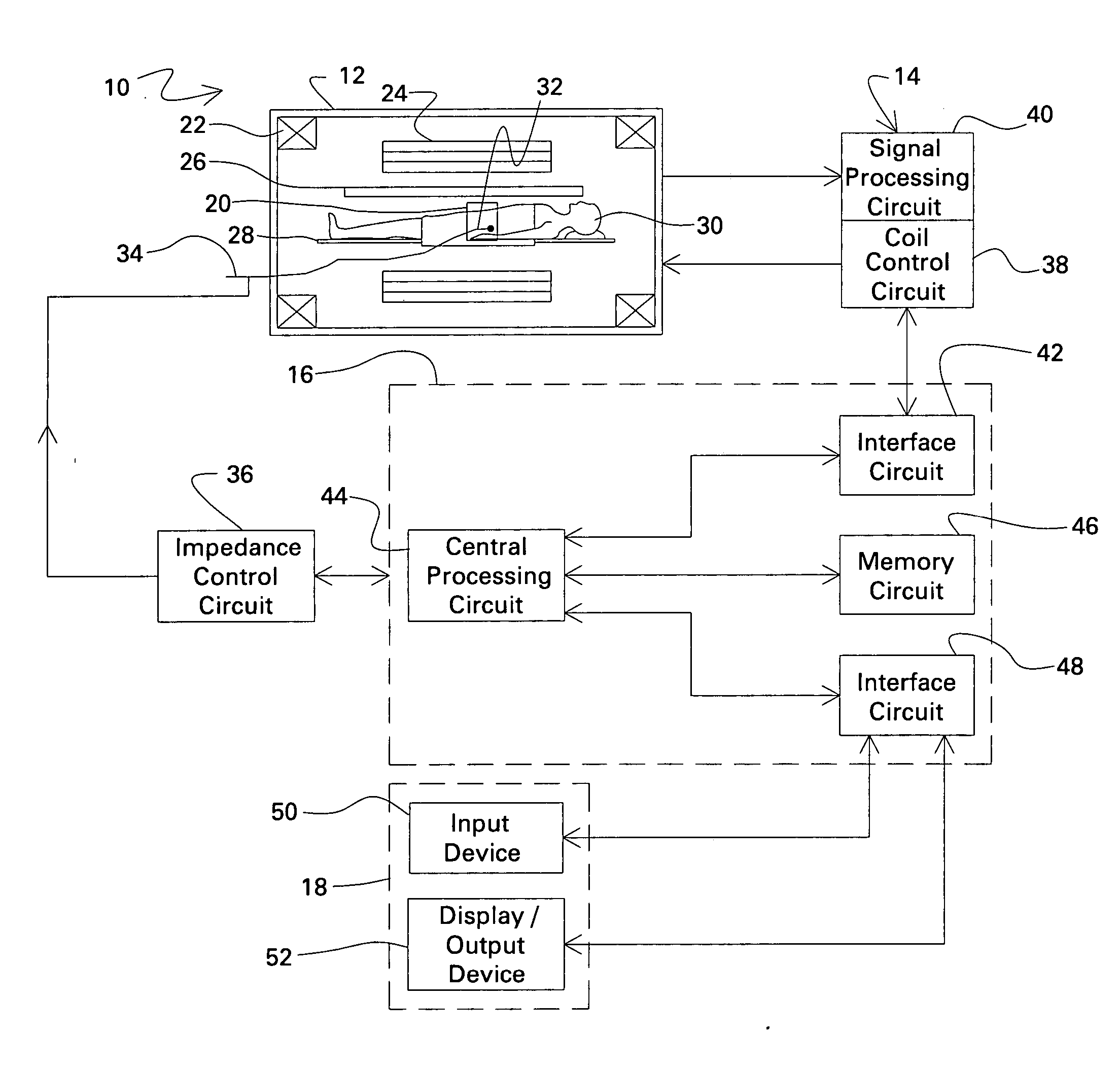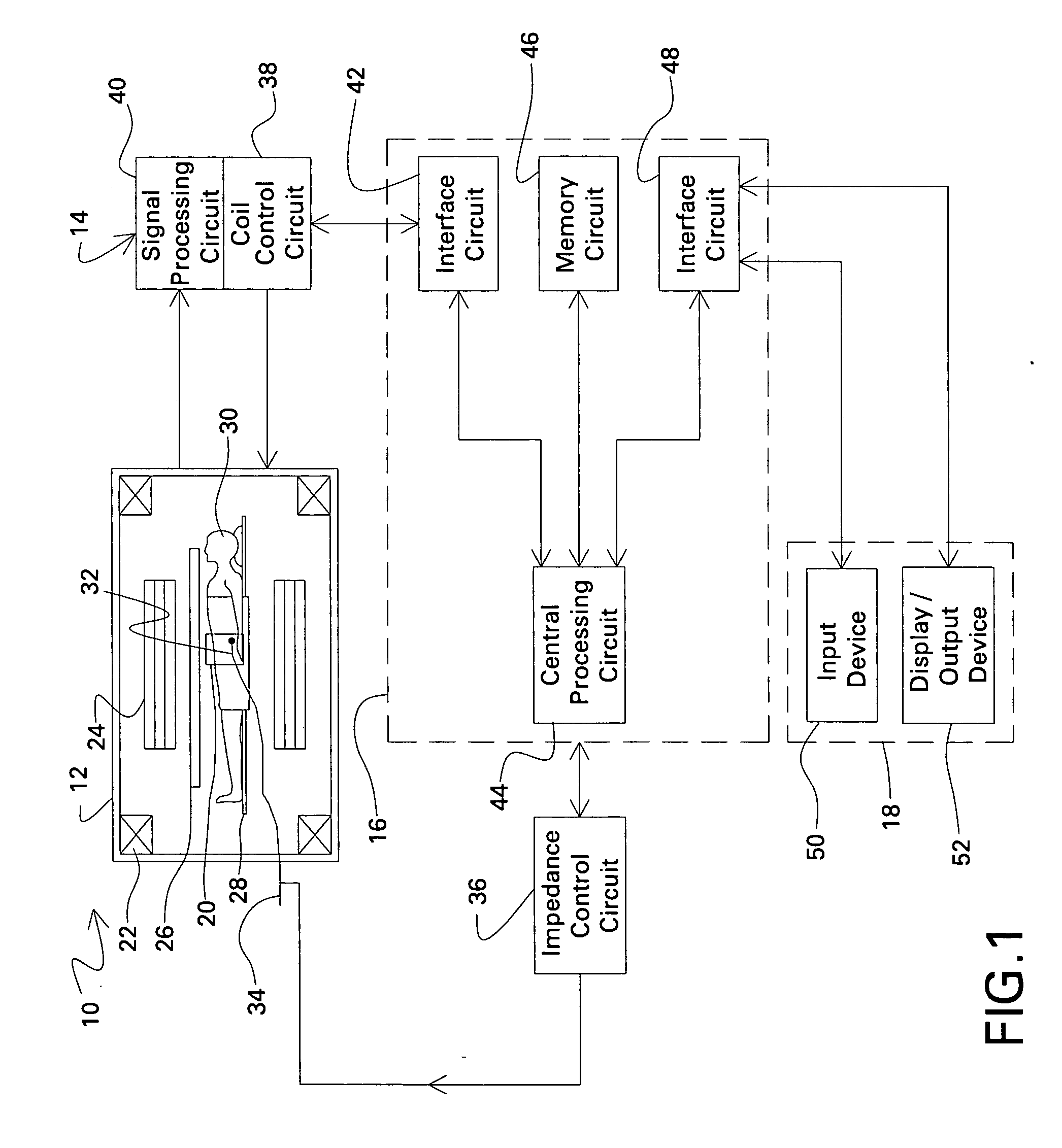Methods and systems for reducing RF-induced heating in magnetic resonance imaging
a technology of magnetic resonance imaging and rf, applied in the field of interventional imaging, can solve the problems of large current and/or voltage, potentially dangerous heating effects, and serious fabrication issues of techniques, and achieve the effect of avoiding current and/or voltage built-up on the wir
- Summary
- Abstract
- Description
- Claims
- Application Information
AI Technical Summary
Benefits of technology
Problems solved by technology
Method used
Image
Examples
Embodiment Construction
[0013] It is frequently desirable to place conducting structures in a magnet resonance (MR) scanner, such as ECG and pacemaker leads, catheter guide wires, and MR tracking devices for catheters. Such wire-like structures interact with the radio-frequency fields in the scanner, and under certain conditions can support large electrical currents and / or voltages and fields that can cause dangerous local heating in tissue. Aspects of the present technique provide alternative ways to keep these currents and / or voltages low by interfering with the resonant conditions that lead to the large currents and / or voltages and electric fields.
[0014] Referring now to FIG. 1, a magnetic resonance system, designated generally by the reference numeral 10, is illustrated as including a magnet assembly 12, a control and acquisition circuit 14, a system controller circuit 16, and an operator interface station 18. The magnet assembly 12, in turn, includes coil assemblies for selectively generating control...
PUM
 Login to View More
Login to View More Abstract
Description
Claims
Application Information
 Login to View More
Login to View More - R&D
- Intellectual Property
- Life Sciences
- Materials
- Tech Scout
- Unparalleled Data Quality
- Higher Quality Content
- 60% Fewer Hallucinations
Browse by: Latest US Patents, China's latest patents, Technical Efficacy Thesaurus, Application Domain, Technology Topic, Popular Technical Reports.
© 2025 PatSnap. All rights reserved.Legal|Privacy policy|Modern Slavery Act Transparency Statement|Sitemap|About US| Contact US: help@patsnap.com



